Ajuga, often called bugleweed, is an attractive but aggressive perennial groundcover that can quickly take over lawn areas if left unchecked. Its rapid spread and dense growth habit make removing ajuga a challenging but essential task for anyone seeking a lush, healthy lawn.
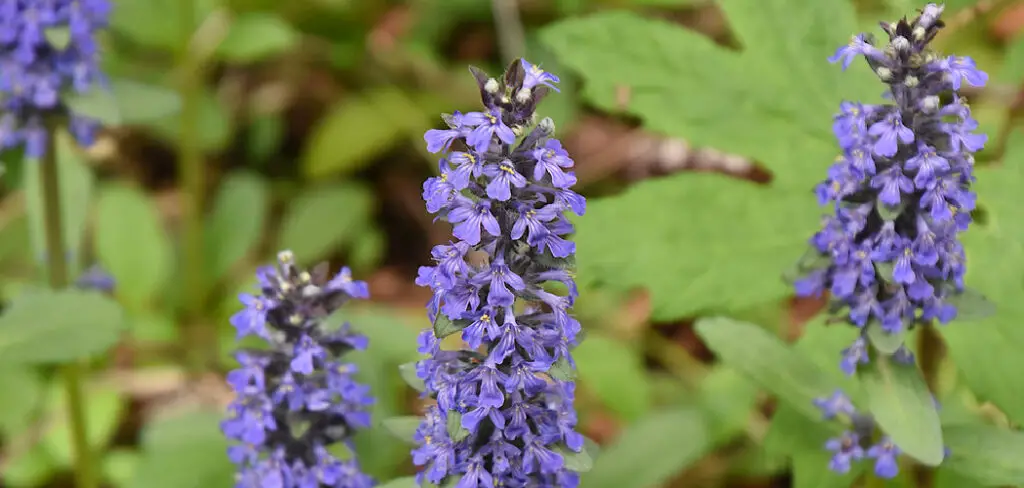
Understanding how to get rid of ajuga in lawn spaces is critical for protecting your turfgrass, restoring curb appeal, and ensuring a more resilient yard. In this comprehensive guide, you’ll learn the best strategies for identifying, removing, and preventing ajuga, so your grass can thrive weed-free.
Understanding Ajuga and Its Impact on Lawns
Ajuga is a mat-forming, low-growing perennial with glossy leaves—typically dark green, bronze, or even purple—and vivid blue or purple flower spikes in late spring. Its botanical beauty belies an invasive nature; ajuga quickly spreads via surface-level runners called stolons, establishing dense mats that smother surrounding grass. It flourishes in moist, shaded spots, but can adapt to more challenging conditions as well. Once established, ajuga deprives lawns of sunlight, moisture, and nutrients, making lawn care more difficult and diminishing turf quality.
Why Ajuga Is Problematic in Lawns
Thick mats of ajuga crowd out desirable turfgrass and other plants, creating thin and patchy lawns. The dense foliage can trap moisture at the soil surface, increasing the risk of fungal lawn diseases. Ajuga’s presence can also encourage certain pests, adding to your lawn’s maintenance needs and possibly threatening other plants in your landscape.
Assessing the Extent of an Ajuga Infestation
Before choosing a removal method, it’s crucial to evaluate how widespread and deeply rooted the ajuga population is in your lawn.
Identifying Ajuga in Your Lawn
To recognize ajuga, look for its signature low-spreading mats of rounded, shiny leaves and upright stalks of bluish-purple flowers in late spring or early summer. Even when not flowering, its rosette-forming leaves, horizontal runners, and tendency to grow lower than turfgrass make identification straightforward. Check for new patches in shaded corners or where your lawn is thinner, as these are frequent starting points for ajuga.
Measuring Infestation Areas
Walk your yard and map the locations and size of Ajuga patches. Small, new clumps are often treatable with hand-pulling or spot treatments, while mature, dense carpets require a long-term strategy, possibly combining several control methods. Knowing the spread and density helps you plan and prioritize resources efficiently.
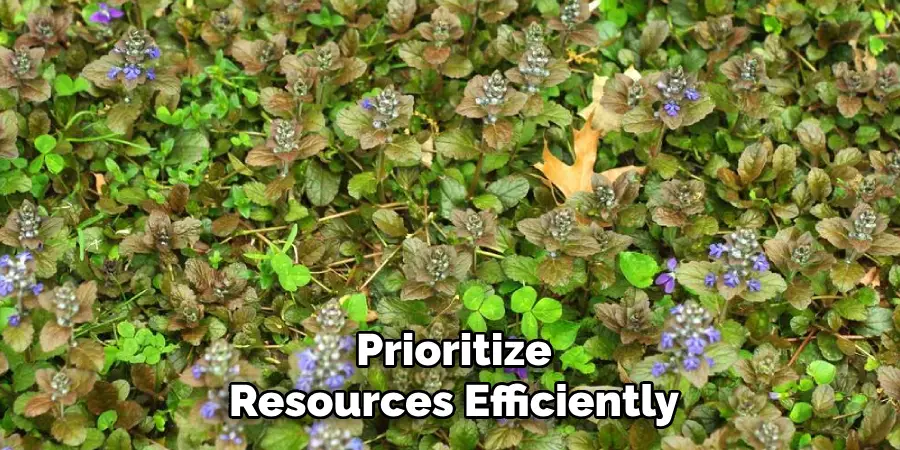
How to Get Rid of Ajuga in Lawn: Methods for Getting Rid of Ajuga
Tackling ajuga typically means deploying both physical and chemical controls, calibrated to the scale and resilience of the infestation.
Manual Removal Techniques
Manual removal is effective for limited or new infestations and in areas where you want to avoid chemicals. Start by watering the area to loosen the soil, then carefully pull up whole plants, including runners and all roots. Use a trowel, spade, or garden fork to ensure you dig up as much of the root system as possible—any remnants left behind may resprout.
Thoroughness is key: bag all removed material and discard it in yard waste—not your compost pile—to prevent re-rooting. Revisit the area every week for a month or two, removing any new ajuga shoots promptly before they are reestablished.
Chemical Control Options
For more substantial or persistent patches of ajuga, selective herbicides provide extra muscle. Use products containing active ingredients like triclopyr or 2,4-D, which target broadleaf species like ajuga without harming most common turfgrasses. Apply herbicide during periods of active growth in late spring or early summer, when ajuga is more susceptible.
Always follow label instructions for dilution, application, and protective measures. Avoid spraying on windy days to minimize drift onto nearby desirable plants. In some cases, repeated applications may be necessary for complete control. Be sure to monitor treated areas for yellowing and wilting as signs of effectiveness, but also check for any negative impact on your turf.
Preparing the Lawn for Post-Removal Recovery
After ajuga removal, your lawn will need a boost to recover lost ground and reclaim its competitive edge.
Soil Quality Improvement
Loosen and aerate compacted soil where thick ajuga mats once grew. Blend in organic matter such as compost to improve structure, increase nutrient availability, and encourage robust lawn root systems.
Reseeding Bare Spots
Spread grass seed over cleared sections to restore turf density. Lightly rake the soil to ensure good seed-to-soil contact, then water consistently until the new grass is established. Thickening the turf deters weed seeds from gaining a foothold and helps the lawn naturally suppress future ajuga invasions.
Preventing Ajuga from Returning
Sustained success requires diligence and a few small changes in your regular lawn care routine.
Maintenance Practices
Maintain a vigorous, healthy lawn by mowing at the appropriate height for your grass species, watering less frequently but more deeply, and following a fertilizer regimen based on soil tests. Regularly overseed bare or thin spots—even minor gaps are vulnerable to weed colonization. Address chronic drainage issues and avoid compacting the soil through heavy traffic.
Creating Physical Barriers
Add edging or deep mulch beds around gardens, trees, and walkways, especially if ajuga is grown intentionally in some landscaping zones. Physical barriers reduce the chance of stolons crossing into grass areas and make future spot treatments or monitoring easier.
Benefits of Removing Ajuga from Lawns
Once Ajuga is gone, you’ll notice better turf growth, improved color, and a more resilient lawn. Fewer weeds mean less time spent on crisis control and more time enjoying your outdoor space. A thick, weed-free lawn provides a superior habitat for beneficial insects and increases property value, all while making general maintenance, such as mowing and watering, more rewarding and efficient.
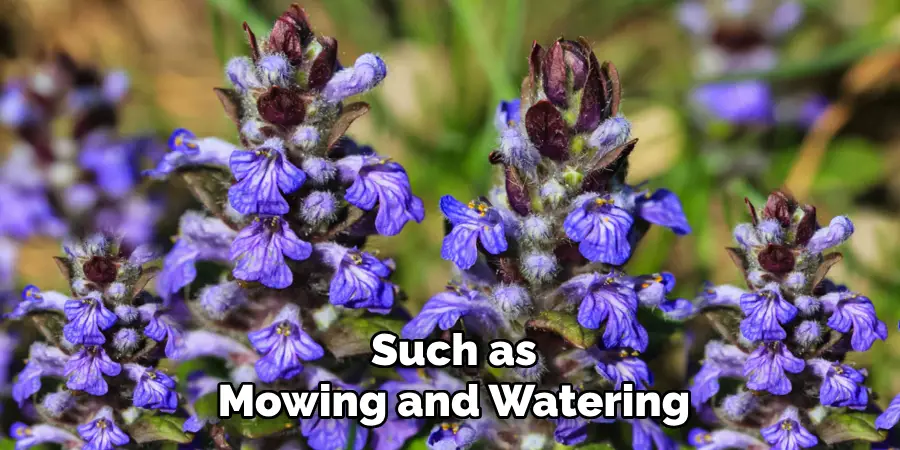
Common Mistakes to Avoid During Ajuga Removal
- Overlooking root systems: Failing to remove all roots results in regrowth and frustration.
- Misapplying herbicides: Choosing the wrong chemical or misusing it can harm grass instead of just ajuga.
- Neglecting recovery: Skipping aeration, compost, and reseeding after removal leaves your lawn vulnerable.
- Lack of vigilance: Assuming the job is done after one attempt lets Ajuga creep back in.
- Incomplete removal: Leaving behind even a small patch of ajuga can quickly spread and take over again.
- Not wearing gloves: Ajuga has tiny hairs that may irritate bare skin, so always wear gloves when handling it.
When to Call a Professional
If after several attempts ajuga still dominates your lawn—or if you’re unsure about which herbicides are safe for your grass—seek professional assistance. Lawn care experts can assess the extent of your problem and recommend a personalized management plan, saving time and ensuring long-lasting results. Additionally, they can advise you on which herbicides are safe for your specific type of grass and the best timing for application.
Some cities have laws prohibiting certain herbicides due to their harmful effects on the environment. Professional lawn care services are familiar with these regulations and can provide alternative solutions that comply with local guidelines. They also have access to professional-grade products not available to homeowners, making them more effective in controlling ajuga infestations.
Frequently Asked Questions About Ajuga Management
What Is Ajuga, and Why Is It a Problem?
Ajuga, also known as bugleweed, is a fast-spreading ground cover plant. While it can be attractive in controlled settings, it often invades lawns, smothering grass, and other desirable plants.
Can I Remove Ajuga Without Using Chemicals?
Yes, manual removal is possible, but it requires persistence. Pulling out the plants by hand, making sure to remove all roots, and following up with reseeding can help control its spread. However, this method may need to be repeated several times.
How Long Does It Take to Eradicate Ajuga From My Lawn?
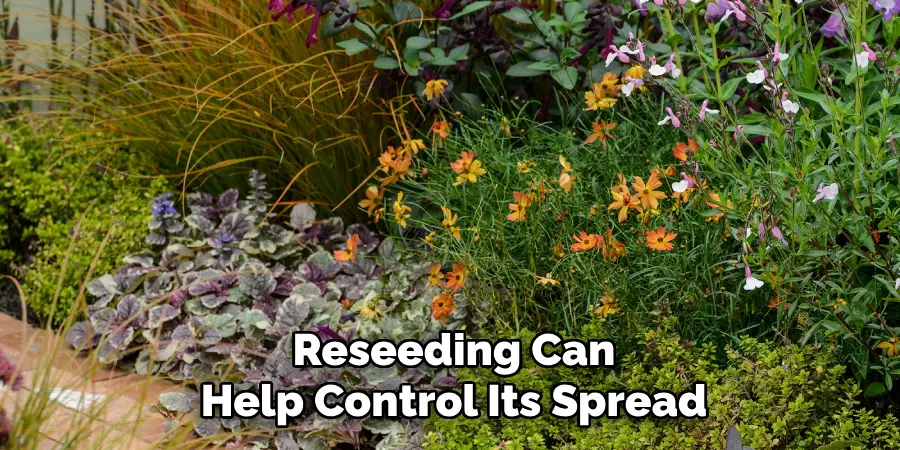
The timeframe varies depending on the extent of the infestation and the method used. Targeted chemical treatments or professional intervention may yield quicker results, while manual efforts may take longer and require ongoing vigilance.
Are There Any Lawn Types More Resistant to Ajuga?
Thick, healthy lawns with dense turfgrass are better equipped to resist ajuga infestation. A well-maintained lawn with proper mowing, watering, and fertilization helps reduce the chances of ajuga taking over.
Is Ajuga Harmful to Pets or Wildlife?
While ajuga itself is not typically harmful, it can harbor pests or compete with native plants that may affect local ecosystems. Always consult with an expert if you’re concerned about long-term impacts.
When Should I Consider Calling a Professional?
If your lawn care efforts fail to eliminate ajuga or if you’re unsure about the safe use of herbicides, calling a lawn care professional is recommended. Experts can provide tailored solutions and ensure the issue is addressed effectively.
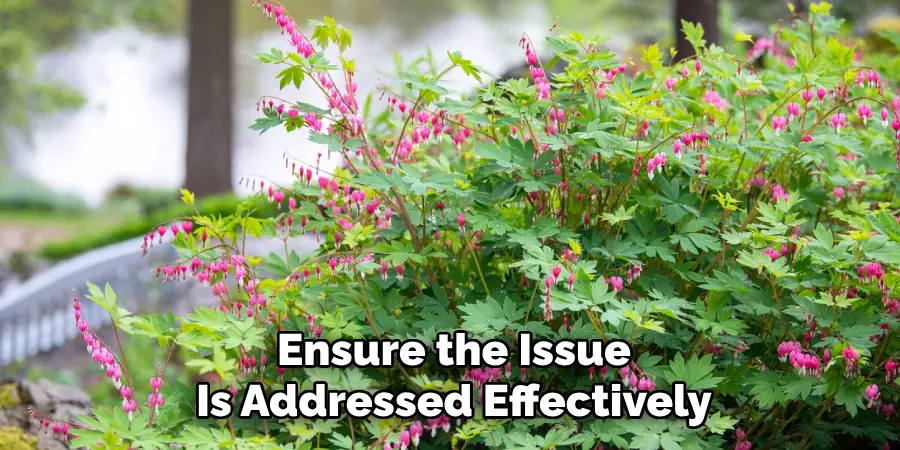
Conclusion
Learning how to get rid of ajuga in lawn areas is critical for the health and beauty of your landscape. A combination of careful identification, targeted removal techniques, and diligent lawn care can bring lasting freedom from this persistent weed. Stay proactive, address new outbreaks quickly, and with patience, you’ll achieve a thick, healthy, and ajuga-free lawn that’s the envy of your neighborhood.

